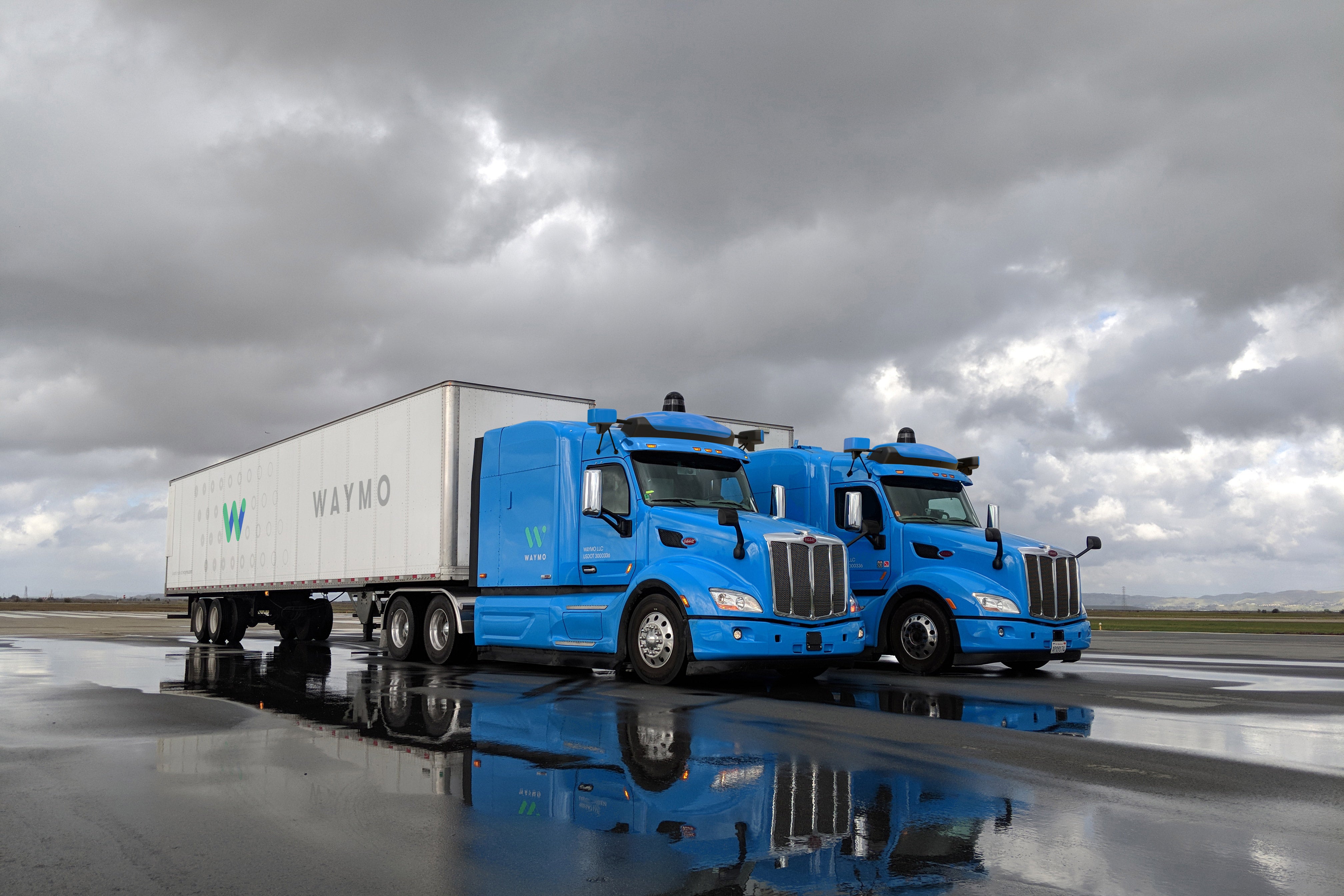Waymo pioneered self-driving cars; now it’s playing catch-up on self-driving trucks. Or is it already in the lead there, too?
The self-driving car company, formerly part of Google and now owned by Google’s parent company, Alphabet, announced Friday that it will start testing self-driving semitrucks on Atlanta highways next week. The big rigs, made by Peterbilt, will carry cargo bound for Google’s data centers, the company said in a blog post. A human driver will be behind the wheel even as the car’s software pilots it.
“Atlanta is one of the biggest logistics hubs in the country, making it a natural home for Google’s logistical operations and the perfect environment for our next phase of testing Waymo’s self-driving trucks,” the company wrote.
This marks a big step in Waymo’s self-driving truck project, one that brings it closer to commercial viability. The company has been quietly testing self-driving semis on roads in California and Arizona for the past year. But trucking is about more than driving: There are complex logistics involved in booking, loading, and delivering freight orders. That’s what Google will begin working on now.
In that respect, Waymo is a trailer-length behind rival Uber. Uber acquired the self-driving truck startup Otto in 2016, a deal that led indirectly to a recently settled lawsuit between Uber and Waymo. Earlier this week, Uber announced that its self-driving semis are now carrying commercial cargo in Arizona for customers of Uber Freight, its on-demand shipping service.
For the time being, Uber is relying on human-driven trucks to collect the loads, then move them onto long-haul self-driving semis at a transfer hub. The self-driving truck drops them off at another transfer hub, and a human-driven truck conveys them to their final destination. It’s a clever if clumsy workaround for a technology that isn’t ready for full autonomy yet.
But if Waymo trails Uber in logistics and commercialization, it may yet prove to hold the advantage when it comes to self-driving software. The company said in its announcement Friday that it’s using the same software and sensors on its semis that power its self-driving minivans, which are in some ways more advanced than Uber’s efforts to date. Waymo boasts:
[O]ur engineers and AI experts are leveraging the same five million miles we’ve already self-driven on public roads, plus the five billion miles we’ve driven in simulation. In short, our near-decade of experience with passenger vehicles has given us a head start in trucking.
It shouldn’t come as a surprise that Waymo is apparently now making trucks a priority. Waymo CEO John Krafcik said in September that self-driving trucks might become widespread before self-driving taxis. That makes sense, because trucks spend most of their time on highways, which are easier for self-driving systems to navigate than local streets.
Whoever’s winning, it’s clear that the race is on. We may look back on the conclusion of the Uber-Waymo lawsuit as akin to the lifting of a caution flag. With the litigation behind them, both companies are stepping on the gas—and states are increasingly paving the way. Let’s just hope they don’t get so focused on jockeying for position that they take unnecessary risks. Race fans may get a thrill from the fiery crashes, but the human motorists who have to share the roads with these big rigs certainly would not.
